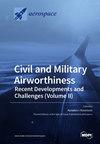Transient Flow Evolution of a Hypersonic Inlet/Isolator with Incoming Windshear
IF 2.1
3区 工程技术
Q2 ENGINEERING, AEROSPACE
引用次数: 0
Abstract
In this paper, a novel flow perturbation model meant to investigate the effects of incoming wind shear on a hypersonic inlet/isolator is presented. This research focuses on the transient shock/boundary layer interaction and shock train flow evolution in a hypersonic inlet/isolator with an on-design Mach number of 6.0 under incoming wind shear at high altitudes, precisely at an altitude of 30 km with a magnitude speed of 80 m/s. Despite the low intensity of wind shear at high altitudes, the results reveal that wind shear significantly disrupts the inlet/isolator flowfield, affecting the shock wave/boundary layer interaction in the unthrottled state, which drives the separation bubble at the throat to move downstream and then upstream. Moreover, the flowfield behaves as a hysteresis phenomenon under the effect of wind shear, and the total pressure recovery coefficients at the throat and exit of the inlet/isolator increase by approximately 10% to 12%. Furthermore, this research focuses on investigating the impact of wind shear on the behavior of the shock train. Once the inlet/isolator is in a throttled state, wind shear severely impacts the motion of the shock train. When the downstream backpressure is 135 times the incoming pressure (p0), the shock train first moves upstream and gradually couples with a cowl shock wave/boundary layer interaction, resulting in a more significant separation at the throat, and then moves downstream and decouples from the separation bubble at the throat. However, if the downstream backpressure increases to 140 p0, the shock train enlarges the separation bubble, forcing the inlet/isolator to fall into the unstart state, and it cannot be restarted. These findings emphasize the need to consider wind shear effects in the design and operation of hypersonic inlet/isolator.高超音速进气道/隔离器在风切变作用下的瞬态流动演变
本文提出了一种新型流动扰动模型,用于研究风切变对高超音速进气口/隔离器的影响。研究重点是设计马赫数为 6.0 的高超音速进气道/隔离器在高空风切变作用下的瞬态冲击/边界层相互作用和冲击流演化,准确地说,是在高度为 30 千米、速度为 80 米/秒的风切变作用下的瞬态冲击/边界层相互作用和冲击流演化。尽管高空风切变强度较低,但结果表明,风切变极大地扰乱了入口/隔离器流场,影响了未节流状态下冲击波/边界层的相互作用,促使喉管处的分离气泡向下游移动,然后再向上游移动。此外,在风切变的作用下,流场表现为滞后现象,入口/隔离器喉部和出口处的总压力恢复系数增加了约 10%至 12%。此外,本研究还重点调查了风切变对冲击系行为的影响。一旦入口/隔离器处于节流状态,风切变就会严重影响减震器的运动。当下游背压为入口压力(p0)的 135 倍时,冲击气流首先向上游移动,并逐渐与整流罩冲击波/边界层相互作用耦合,从而在喉管处产生更显著的分离,然后向下游移动,并在喉管处与分离气泡脱钩。然而,如果下游背压增加到 140 p0,冲击波组会扩大分离气泡,迫使入口/隔离器陷入非启动状态,无法重新启动。这些发现强调了在设计和运行高超音速进气口/隔离器时考虑风切变效应的必要性。
本文章由计算机程序翻译,如有差异,请以英文原文为准。
求助全文
约1分钟内获得全文
求助全文
来源期刊

Aerospace
ENGINEERING, AEROSPACE-
CiteScore
3.40
自引率
23.10%
发文量
661
审稿时长
6 weeks
期刊介绍:
Aerospace is a multidisciplinary science inviting submissions on, but not limited to, the following subject areas: aerodynamics computational fluid dynamics fluid-structure interaction flight mechanics plasmas research instrumentation test facilities environment material science structural analysis thermophysics and heat transfer thermal-structure interaction aeroacoustics optics electromagnetism and radar propulsion power generation and conversion fuels and propellants combustion multidisciplinary design optimization software engineering data analysis signal and image processing artificial intelligence aerospace vehicles'' operation, control and maintenance risk and reliability human factors human-automation interaction airline operations and management air traffic management airport design meteorology space exploration multi-physics interaction.
 求助内容:
求助内容: 应助结果提醒方式:
应助结果提醒方式:


